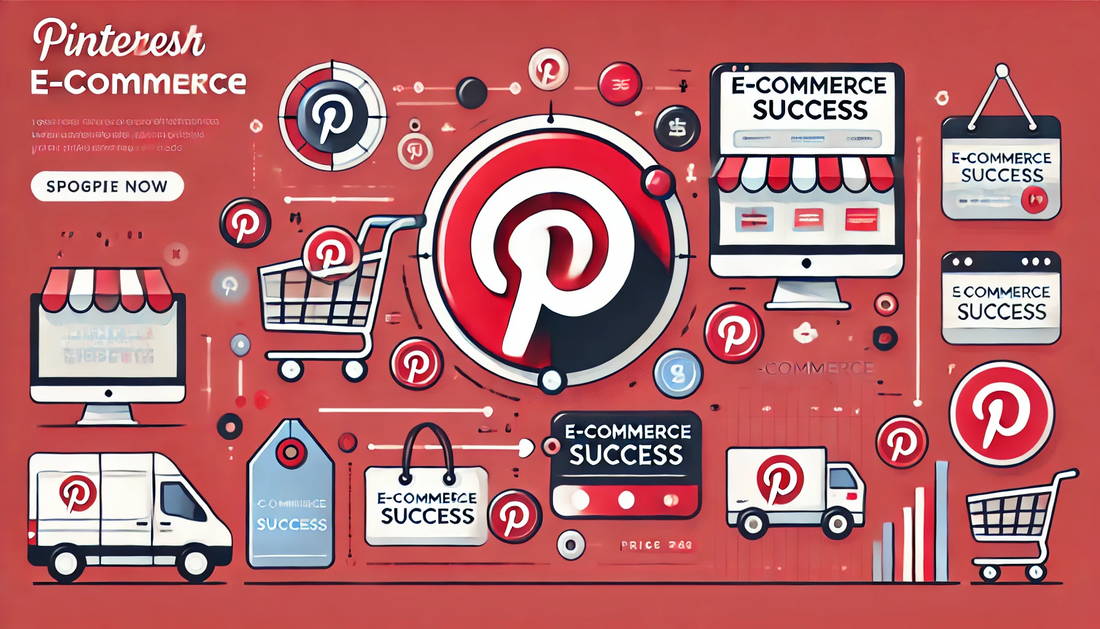Once a humble mood board for DIY enthusiasts, Pinterest has now evolved into an e-commerce powerhouse. 🚀
It’s not just about pinning ideas anymore—it's about buying them. This transformation didn’t happen overnight, but it offers valuable lessons for startups and businesses looking to monetize their platforms.
Let’s break down how Pinterest turned inspiration into income and how you can do the same!
The Turning Point: From Pins to Profits
Pinterest started as a place to discover ideas, but it soon realized that people weren’t just saving pictures for fun—they were planning purchases. 🛍️
Users were searching for wedding decor, home renovations, fashion trends, and recipes—all with the intent to buy. Pinterest saw the potential and made a strategic pivot toward e-commerce.
Key takeaway: If users are already looking for products, give them an easy way to buy. Make your platform shoppable!
Monetizing User Intent: The Secret Sauce
Pinterest wasn’t just a site for collecting pretty pictures; it was a goldmine of consumer intent. The platform leveraged this by introducing shoppable pins, making it easier for users to purchase products directly from the app. 🛒
Suddenly, Pinterest wasn’t just a social network; it was a shopping destination.
Startup Tip: Study your audience’s behavior. Are they passively browsing, or are they ready to buy? Align your business model with their intent.
Seamless Shopping Experience = Higher Conversions
One of Pinterest’s smartest moves was removing friction from the shopping process. Features like:
- Shop the Look: Let users buy products directly from images.
- Catalog Integration: Businesses could upload product catalogs, turning Pinterest into a digital storefront.
- Visual Search: Users could snap a picture and find similar products.
These changes didn’t just improve user experience—they supercharged conversion rates. 💰
Your Action Plan: Reduce the steps between discovery and purchase. The easier it is to buy, the more sales you’ll make.
Advertising That Feels Natural, Not Forced
Pinterest redefined advertising by blending it seamlessly with content. Instead of disruptive ads, users saw Promoted Pins and Shopping Ads that fit naturally into their feed.
This non-intrusive approach led to higher engagement and better ROI for advertisers. No one likes spammy ads, but everyone loves discovering useful products.
Startup Strategy: Make your ads feel like part of the user experience, not an interruption.
Leveraging Data to Drive Sales
Pinterest didn’t just throw products at users—it used data to personalize recommendations. 🔍
By analyzing searches, past pins, and browsing habits, the platform delivered highly targeted product suggestions. The result? More purchases.
Pro Tip: Use AI and analytics to personalize user experiences. The more tailored the content, the higher the engagement.
Going Global: Expansion Beyond Borders
Pinterest didn’t stop at the U.S.—it expanded its e-commerce and ad offerings worldwide. By localizing content and payment options, it tapped into global markets, driving exponential revenue growth. 🌎
Growth Hack: If you have an online business, consider international markets early. A product that works locally can thrive globally with the right strategy.
The Power of Influencers and Creators
People trust recommendations from real people. Pinterest capitalized on this by partnering with influencers who promoted shoppable content.
This wasn’t traditional advertising—it was authentic storytelling that resonated with audiences.
Lesson for Startups: Work with influencers who align with your brand values. Let them showcase your products in an organic way.
Investing in Creators = Building a Community
With initiatives like the Pinterest Creator Fund, the platform empowered content creators, ensuring fresh, engaging content while fostering loyalty.
A strong community isn’t just a nice-to-have; it’s a business advantage.
Founder’s Note: Build a community, not just a customer base. Engaged users will become your biggest advocates.
Mobile Optimization: The Ultimate Game Changer
With more users shopping on their phones, Pinterest optimized its app for a smooth mobile experience. Features like one-click purchases and mobile-friendly search made it easier than ever to buy on the go. 📱
Startup Must-Do: Prioritize mobile UX. If your checkout process is clunky on mobile, you’re losing sales.
Embracing Augmented Reality (AR)
Pinterest took shopping to the next level with virtual try-ons. Users could see how makeup, glasses, or home decor looked before purchasing, reducing guesswork and returns.
This innovation made online shopping more immersive—and more profitable.
Tech Trend Alert: If you’re in e-commerce, explore AR and interactive shopping experiences to stay ahead of the curve.
The Pinterest Playbook for Startups
- Find hidden revenue: Look at how users interact with your platform. Are you missing a monetization opportunity?
- Make shopping seamless: Fewer steps, faster checkout, and easy navigation = more conversions.
- Leverage data: Personalization increases engagement and sales.
- Global thinking: Expand strategically into new markets.
- Authentic marketing wins: Influencer and creator partnerships drive trust and sales.
- Go mobile-first: A great desktop experience isn’t enough—optimize for mobile.
- Innovate boldly: Be open to emerging technologies like AR to enhance user experience.
The Final Takeaway
Pinterest’s pivot to e-commerce wasn’t just smart—it was revolutionary. By understanding user intent, simplifying shopping, and leveraging data, it turned a passive platform into an active marketplace.
For startups, the lesson is clear: Adapt, innovate, and put the user experience first. Do that, and you’re on your way to building something extraordinary.
Ready to turn inspiration into revenue? The blueprint is right here. Go make it happen! 💡💸










